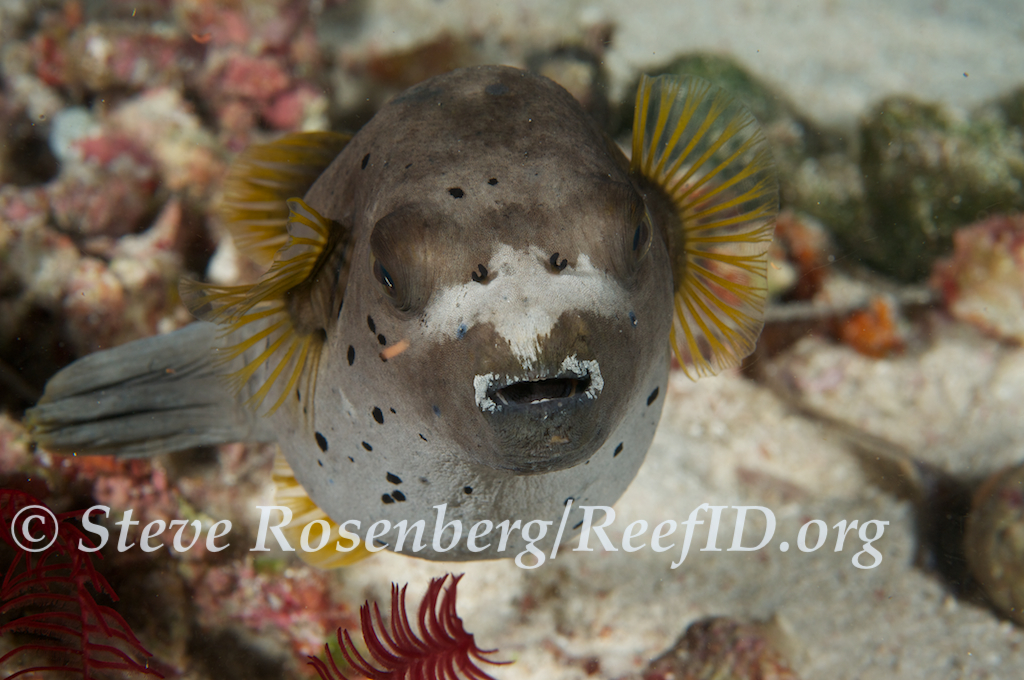The Arothron Dog Face Puffer, also known as the Blackspotted Puffer or the ‘puppy puffer,’ gets its name from its resemblance to a lovable canine. It can be found on reefs throughout much of the Pacific Ocean and Indian Ocean.
It changes appearance during different stages of life. While in the gray phase, it is gray with black markings around the mouth, eyes, and dorsal fin. The pectoral fins have a yellow appearance. The half-yellow phase is denoted by a yellow underbelly and dark gray overcoat, while the face looks similar to the gray phase. It may also have black spots over the body, which may be gray or yellow.
The puffer’s unique and distinctive natural defenses help compensate for its slow locomotive. It moves by combining pectoral, dorsal, anal, and caudal fins. This makes it highly maneuverable, but very slow, and therefore a comparatively easy predation target. Its tail fin is mainly used as a rudder, but it can be used for a sudden evasive burst of speed that shows none of the care and precision of its usual movements. The puffer’s excellent eyesight, combined with this speed burst, is the first and most important defense against predators. In order to ward off potential enemies, they can inflate their bodies by swallowing air or water, until they are much larger and almost spherical in shape. Even if they are not visible when the puffer is not inflated, all puffers have pointed spines, so a hungry predator may suddenly find itself facing an unpalatable, pointy ball rather than a slow, tasty fish.
Instead of “teeth,” it has a fused beak-like structure, which it uses to crush prey. It feeds on algae, corals, sponges, sea squirts, crustaceans and mollusks.
Did you know that blackspotted puffers are highly poisonous, making them dangerous or even deadly to eat? Predators that do manage to swallow a puffer may find their stomachs full of tetrodotoxin, making puffers an unpleasant, possibly lethal, choice of prey. This neurotoxin is found primarily in the ovaries and liver, although smaller amounts exist in the intestines and skin, as well as trace amounts in muscle.
Article by By Steve Rosenberg for ReefID.org


